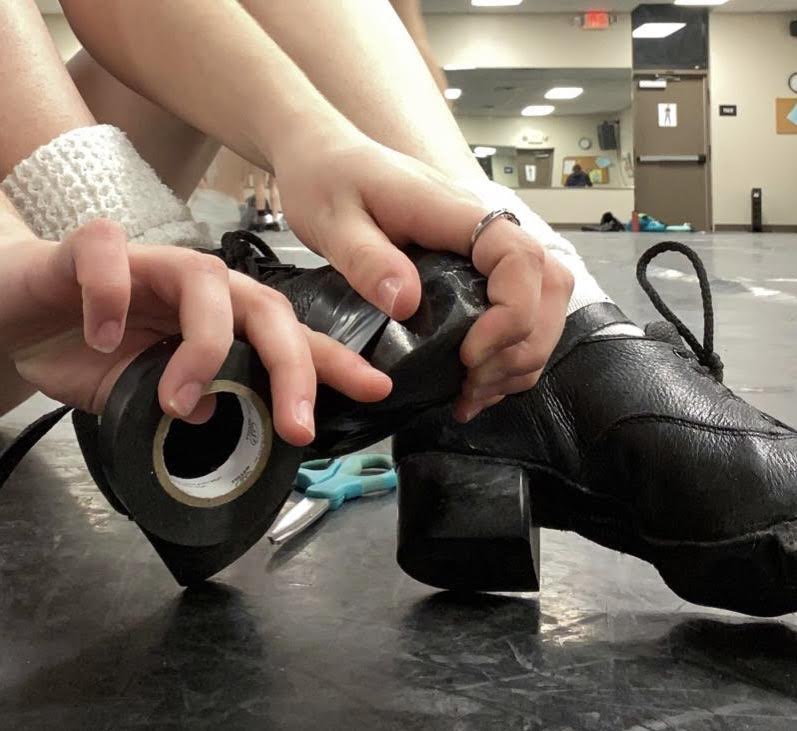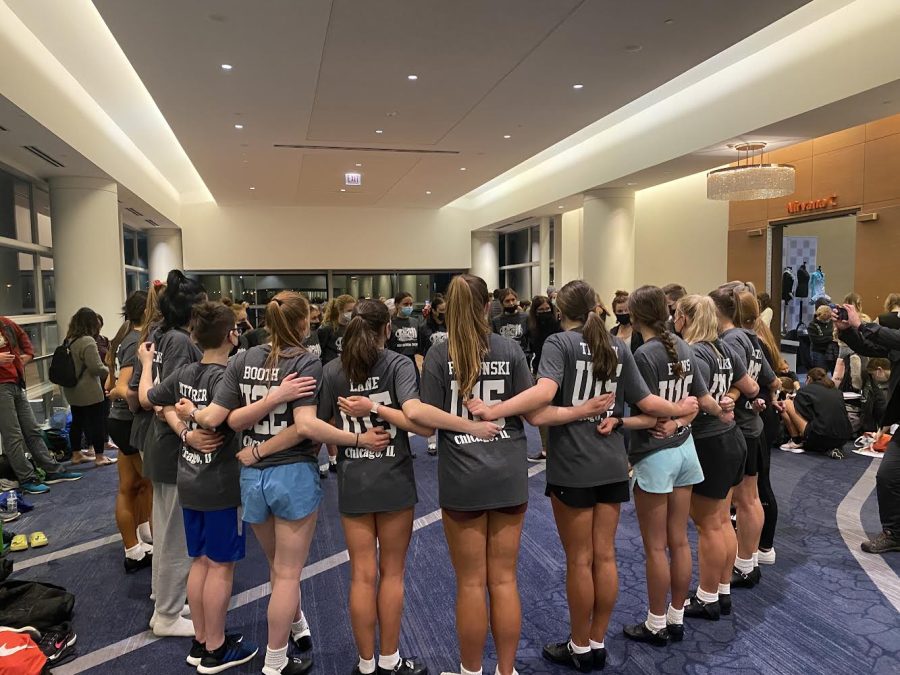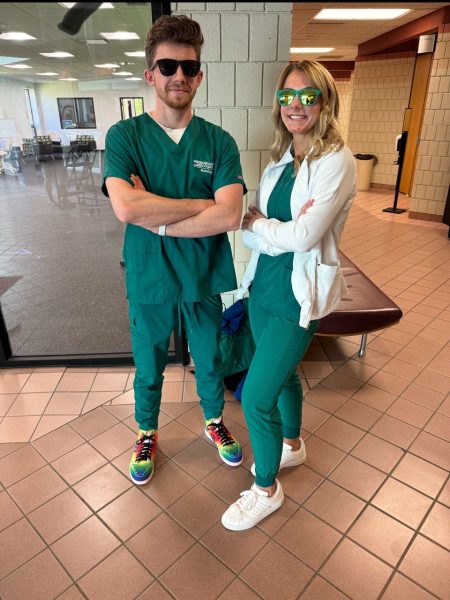Just dance through it
The physical and mental injuries in dance
When I was ten, I had fallen on a hard wooden stage, smashing my tailbone while competing, leading to a permanently bruised tailbone. While in practice a year later, my ankle had suddenly collapsed underneath me, breaking on a growth plate under severe pressure. Years later, while filming for an online competition, muscles in my lower back became too weak, triggering my bruised tailbone, sending me crashing to the floor for once again, more weeks in rehab. Along with multiple broken toes, it is clear that injuries, a daunting presence looming in the shadows, are very prominent in a dancer‘s life.
Whether or not dance is a sport, oftentimes the injury rate is the same. There are many different forms of dance, yet injuries are more than common in each regardless of their differences.
32-51 percent of dancers get injured in a year according to the Journal of Orthopedic Sports and Physical Therapy.
As the level of complexity and attention to detail each year increases, so does the percentage of dancers getting injured. Dancers are spending more and more time in the studio, perfecting their craft to the point of exhaustion.
According to a recent study conducted for the feature, nearly 50 percent of dancers spend 7-8 hours in the studio weekly and 44 percent of dancers have been majorly injured 5 to 6 times.
As the hours in the studio increase, it seems that so does the rate of injuries. Some dancers are able to learn from their injuries to rework injury-preventing stretches and exercises into their schedules, whereas some do not. They continue as they did before and ruin their career further.
”My injury opened my eyes to my own physical bounds,” said Clara Kelly, a sophomore Irish dancer at Fox Chapel. “I had to learn my body and how much it could handle, and then make decisions about how much I could do based on this. It was very difficult, coming from being someone who practiced nearly everyday for hours. I had to cut down severely and focus more on recovery, even just once a week.”
Kelly is a competitive Irish dancer, which is a type of dance that focuses on the traditional and modern dances of Ireland. “Irish dance is growing in popularity and competitiveness; however, very little research has focused specifically on this genre of dance,” according to the National Library of Medicine. Dance, no matter of genre, has led most dancers down the road towards a disintegrating mental health following injuries.
”I would say constantly being mad at myself for being injured or in pain would be the biggest mental battle,” said Shannon Best, an Irish dancer at North Allegheny. “Having crazy injuries made me get really behind in class and I always got mad and blamed injuries on myself because I was constantly comparing myself with others who looked much stronger.”
Mental health plays a huge part in the prevention of injuries. With a deteriorating mental health, a dancer is not able to be up to their full potential. Oftentimes, dancers don’t even realize that they are in danger of getting injured; peers often have to intervene.
According to Stop Sports Injuries (SSI), ”Parents play a large role in dance injury prevention…parents must be cognizant of any nutritional or psychological changes their children display as a result of trying to conform to an unhealthy dance image.”
Eating disorders (ED) are very common in a dancers’ life. What is seen as a simple way of losing weight quickly turns into a battle between healthy and sickly. WIth an ED, injury rates fly through the roof. Dancers become so much more prone to injuries due to lack of nutritions. As that lack adds up, bones and muscles become weaker, basically asking for an injury.
”The foot/ankle/lower leg area is vulnerable to a wide range of injuries, including stress fractures, tendon injuries, sprains, and strains,” according to SSI. “These injuries show up with greater frequency in dancers as they age, so it is extremely important to emphasize what the young dancer can do to prevent future injuries.”
Most dancers are not aware of how to prevent an injury. They might simply think it’s about falling, tripping, or lack of skill. Dancers must know how to take care of themselves before it’s too late. Once they get older, the damage is done and it takes many hours spent in physical therapy to reverse it.
Things such as “type of dance, frequency of classes, rehearsals, and performances, duration of training, environmental conditions such as hard floors and cold studios, equipment used, especially shoes, individual dancer’s body alignment, prior history of injury, and nutritional deficiencies” are all key contributors to injuries accorded to SSI.
Awareness of contributors decreases one’s injury rate, as they can now think more about their training. Simply being aware is one of the biggest preventers from injury. One injured dancer will often let their thoughts tell them the most negative things.
”I think that my worst instance of mental injury was when I returned to dance as a sophomore in college and after 2 years of not continuously dancing,” said Sydney Loewy, an Irish Dancer at the Bell School of Irish Dance. “Getting over the idea that I was not even close to as good as I used to be, was a super difficult fact to face. It was difficult because I knew what my best felt like but I could never obtain it. Physical injury is often easier to confront because you don’t need to admit hard truths.”
As dancers let their negative, intrusive thoughts get into their head, it can lead to even worse things, such as degrading themself, putting off an injury, or even considering quitting.
81 percent of dancers that took a recent poll said they have considered quitting dance after an injury.
Whether injuries are major or minor, they still take a toll on a dancer’s body and mental health. Once everything becomes too much, they often resort to quitting.
”Stretching is a huge factor in preventing injuries,” said Irish dance teacher, Julia Bell. “Making sure dancers stretch before and after class is my biggest priority. If dancers are injured, making sure they get the proper care is huge.”
Bell, who had danced for 12 years, started the Bell School of Irish dance in 1999. As a previous dancer and a mother to two dancers, she knows exactly just how much injuries can take a toll on a dancer.
”Dancers respond well to medical providers who respect both the aesthetics and intensity of dance,” according to SSI.
In this day and age, medical providers have gotten much more specialized, meaning there are doctors out there who specialize in helping dancers prevent and recover from injuries. The research must be done to find them because it will be beneficial for the dancer in the long run.
Dancers love what they do. It makes them happy, but when they have to dance through the tortures of mental and physical health, it makes them wonder: when is it enough?








